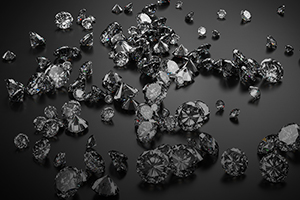Quantum Diamonds

The holy grail of secure communication is quantum-encrypted data. But, as we’ve reported many times, storing quantum bits of information (or qubits) is not as simple as storing ones and zeroes. Qubits rely on a variety of subtle relationships between electrons, which can easily be lost if the material in which they’re being stored is unstable. In addition, qubits can only be transmitted short distances over optical cables without losing their special quantum properties, so they must pass through a series of repeaters to prevent degradation of the signal.
One challenge has been finding a suitable material to create a quantum repeater. Diamonds are good candidates, but even natural diamonds display too much variation to be useful. In fact, much of the work in the field of quantum optics to date has been performed with fragments of a single diamond from Russia that just happened to have the optimal characteristics.
Recently, a team of scientists crafted a synthetic diamond that is close to being able to support the desired photon wavelengths for quantum communication. By reducing the amount of nitrogen and increasing levels of silicon and boron, the team, in partnership with an industrial diamond manufacturing company, has discovered a way to control the charge state of defects within the diamond, which is essential for maintaining the proper orientation to store qubits and transmit quantum information. The next step will be to interface the diamonds with photonic circuits.
For information: Nathalie de Leon, Princeton University, Department of Electrical Engineering, Engineering Quadrangle, 41 Olden Street, Princeton, NI 08544; phone: 609-258-5694; email: npdeleon@princeton.edu; website: http://ee.princeton.edu/